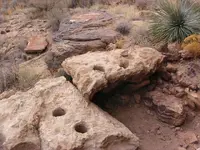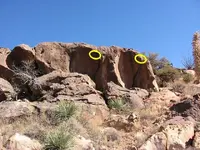nmth
Sr. Member
Allegedly, a letter written in Spanish was found in the ruins of an old adobe house in Santa Clara NM. I neither know when the letter was written or by whom, nor who found it or when. I may be wrong about the town as it's been quite a few years since I heard the story, but Santa Clara seems to be the home of many secrets.
I haven't seen the entire contents of the letter, but a few lines from it were included in a private booklet entitled Secrets of La Sierra de Cuco, written by my surveying buddy Johnny Sosaya ~2001/2002 that discussed several intriguing Cookes Range petroglyphs.
"Al rumbo al norte, pasado Las Tres Hermanas, encontraras La Sierra de Cuco que come de la mesa. Aye tanto oro que se qui de la mesa."
Translated as, "To the north, beyond the Three Sisters Mountains, you will encounter a mountain range where a bogeyman eats off the land. There you will find so much gold that it spills over the land."
Tres Hermanas. Tres Hermanos. Lots to learn looking into the drift of those names over time. But what anchors this to the presently assumed range by Columbus?
The Mexican Boogeyman I know of is El Cucuy.












